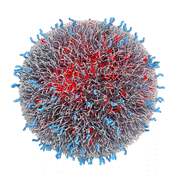Biotechnology, Center for
Date of this Version
2023
Document Type
Article
Abstract
Fusarium head blight (FHB) caused by Fusarium graminearum is one of the most devastating diseases of wheat and barley worldwide. Effectors suppress host immunity and promote disease development. The genome of F. graminearum contains hundreds of effectors with unknown function. Therefore, investigations of the functions of these effectors will facilitate developing novel strategies to enhance wheat resistance to FHB. We characterized a F. graminearum effector, FgNls1, containing a signal peptide and multiple eukaryotic nuclear localization signals. A fusion protein of green fluorescent protein and FgNls1 accumulated in plant cell nucleiwhen transiently expressed in Nicotiana benthamiana. FgNls1 suppressed Bax-induced cell death when co-expressed in N. benthamiana.We revealed that the expression of FgNLS1 was induced in wheat spikes infected with F. graminearum. The Fgnls1 mutants significantly reduced initial infection andFHBspread within a spike.The function of FgNLS1 was restored in the Fgnls1-complemented strains.Wheat histone 2B was identified as an interacting protein by FgNls1-affinity chromatography. Furthermore, transgenic wheat plants that silence FgNLS1 expression had significantly lower FHB severity than control plants. This study demonstrates a critical role of FgNls1 in F. graminearum pathogenesis and indicates that host-induced gene silencing targeting F. graminearum effectors is a promising approach to enhance FHB resistance.


Comments
U.S. government works are not subject to copyright.